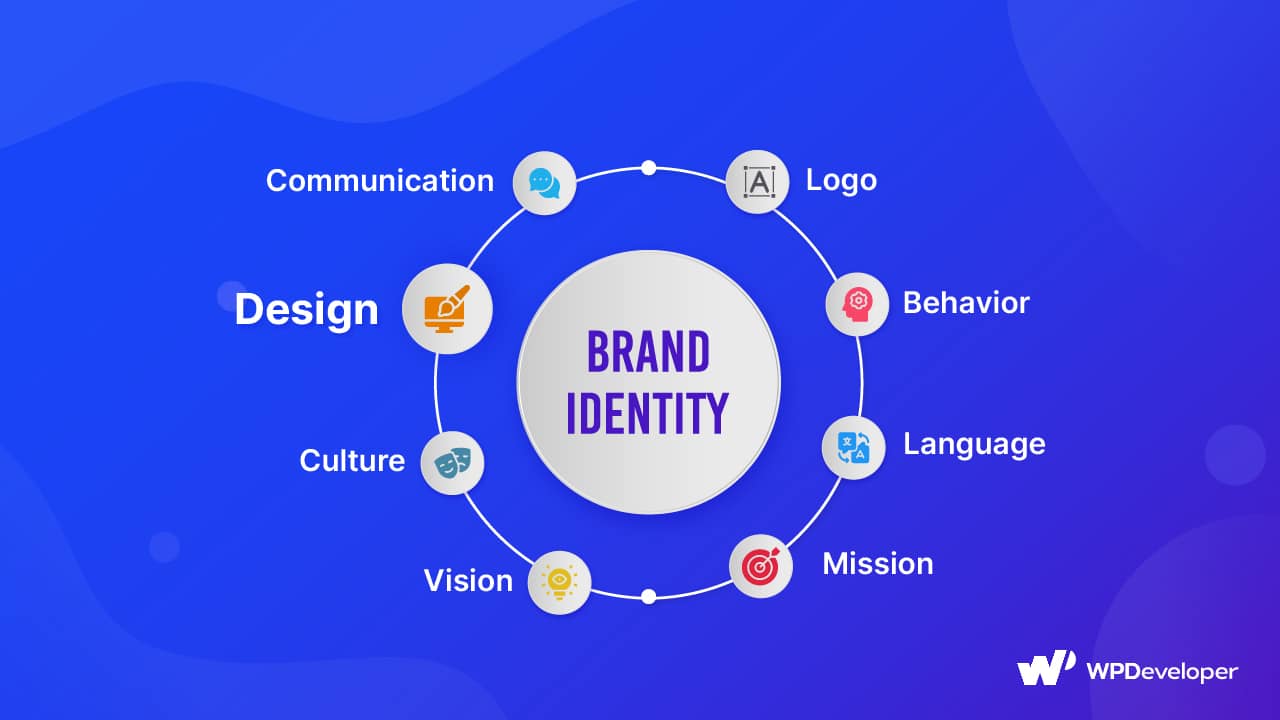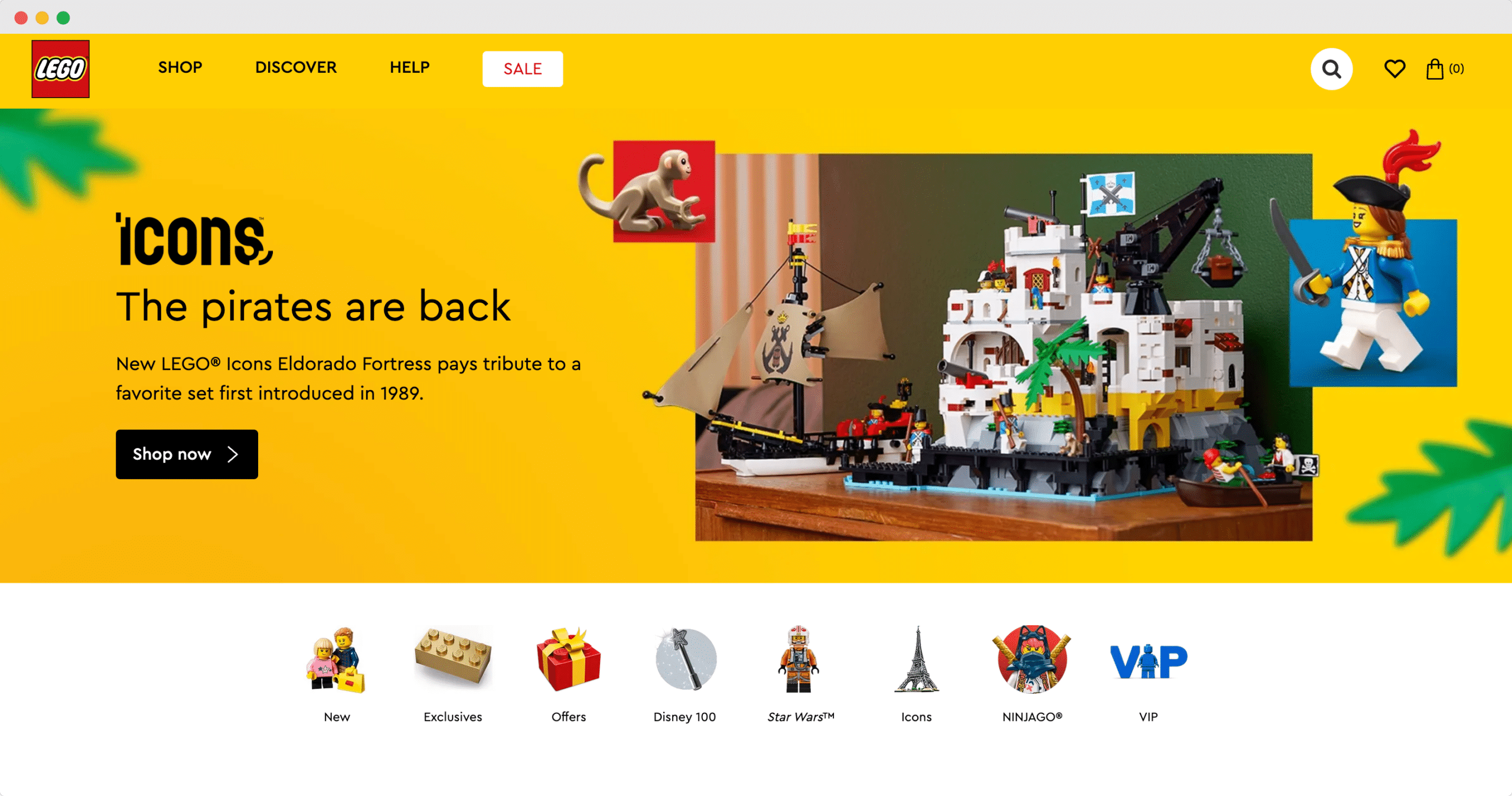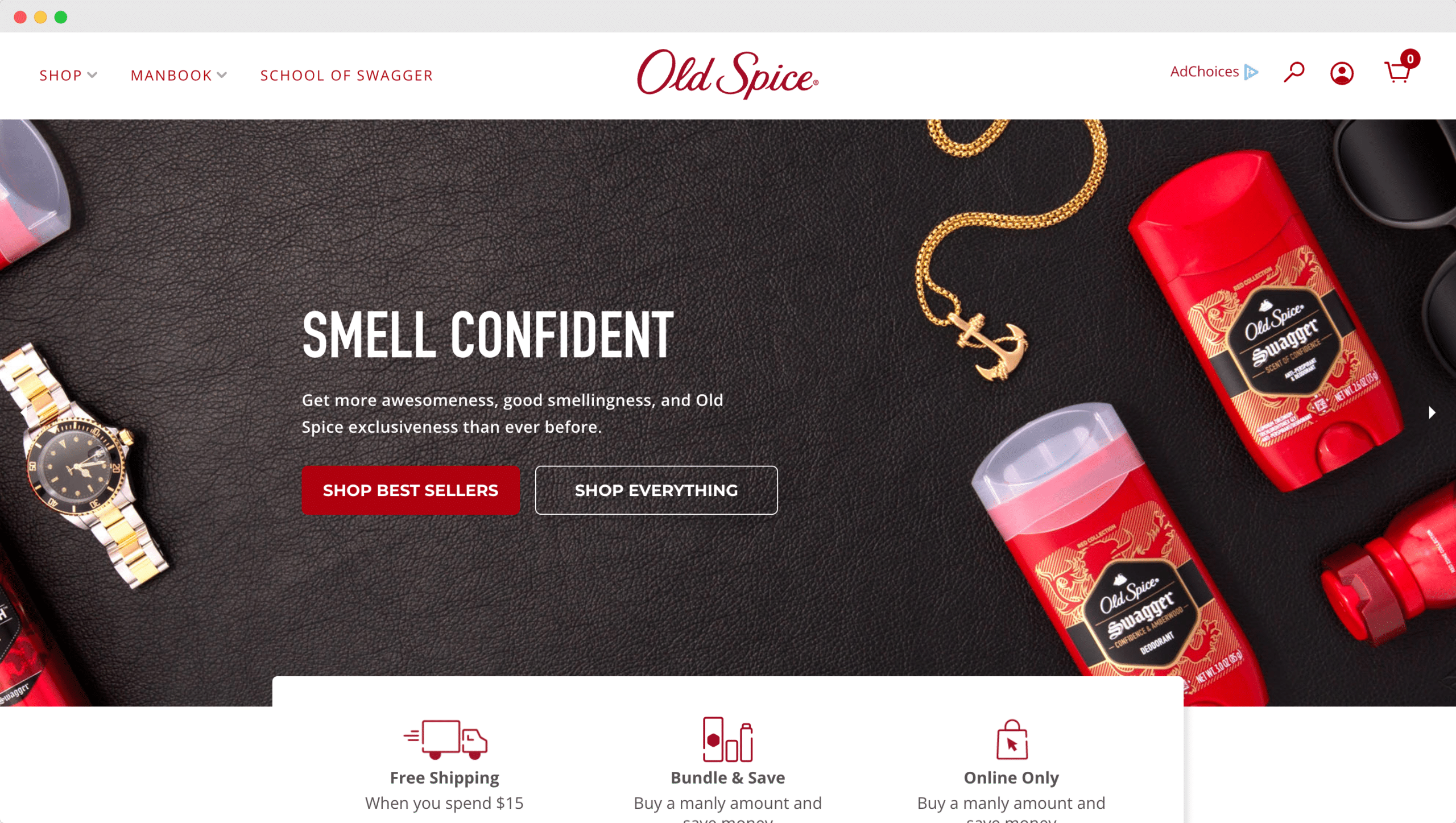Ever wonder why some brands position themselves in your memory, while others are forgotten in a blink of an eye? This happens when you successfully create a memorable brand identity through your design. Let’s delve into this design guide on how to develop a brand identity with some proven tips and tricks for a successful brand endeavor.

Why Is It Important To Develop A Brand Identity?
First, let’s figure out what is brand identity. Think of brand identity as the heart and soul of your business; it’s what gives your brand its individuality. It’s the encapsulation of everything that makes up your company’s values, ideals, tone, and aesthetics. More than just a logo or a catchy tagline, it’s the complete sensory experience that your brand projects into the world.
Consider iconic brands like Apple, Bata, and Amazon to visualize this idea. Apple’s brand identity is an embodiment of innovation, sleek design, and high-end technology. The promise of ‘thinking different,’ a minimalist aesthetic, and the company’s iconic bitten apple logo all come together to form this persona.
Bata is another example of a recognizable brand identity. The combination of the bold, capital-lettered logo and the striking red-and-white color scheme allows Bata to project a confident, simple, and reliable image, making it stand out in the footwear market. The consistency in the application of this logo and color scheme across all platforms – from storefronts to packaging, to online interfaces – further strengthens Bata’s unique brand identity.

The way Amazon has developed a brand identity through its logo and color scheme is strong and unique, making it one of the most recognizable brands worldwide.
🎯 Logo: Amazon’s logo has a clever design that communicates two key aspects of its brand identity. The logo includes the word “Amazon” in lowercase letters, with an arrow extending from the ‘a’ to the ‘z’. This design conveys two things:
The arrow’s resemblance to a smile suggests a positive customer experience, embodying Amazon’s customer-centric philosophy and its commitment to customer satisfaction.
The arrow pointing from ‘a’ to ‘z’ represents the idea that Amazon provides a wide range of items — literally, everything from A to Z. This reinforces the image of Amazon as a comprehensive, one-stop shopping destination.
🎨 Color scheme: Amazon uses a simple yet effective color scheme in its logo, with black lettering and a yellow arrow. This choice of colors serves specific purposes:
Black is often associated with power, elegance, and sophistication. It communicates the reliability and authority of Amazon as a leading e-commerce player.
The yellow arrow (or ‘smile’) injects a sense of happiness and positivity. Yellow is associated with joy and energy, suggesting an enjoyable and dynamic shopping experience.
There are, nevertheless, important distinctions despite their subtle similarity. Brand identity is what you, as a brand, project to the world. It’s the impression you’ve worked hard to cultivate with your appearance, words, and actions.
However, your brand’s image is how that brand is seen by the general public. It’s a reflection of who you are, and the two don’t always coincide. Brand personality is the human traits that your brand embodies – think of it as your brand’s character in the story of the marketplace.
In today’s fiercely competitive business environment, it’s an absolute must to develop a brand identity. It is the rudder that steers your product through the waves of competition to the safe harbor of your customers’ inclination.

Develop A Brand Identity That Creates A Brand Story
First and foremost, a brand’s personality affects how people think about it. It’s the way your audience sees your brand, and it affects how they think, feel, and eventually decide whether or not to buy from you. For instance, consider Patagonia. Their commitment to protecting the environment is part of their brand identity, which helps them draw customers who share these values.
Next, your company identity is a big part of what sets you apart from your competitors. When customers have a lot of options, a strong brand personality helps you stand out. Think about the drinks Pepsi and Coca-Cola. Both brands sell similar goods, but their different brand identities—Coca-Cola’s is nostalgic and focused on happiness, while Pepsi’s is young and looks to the future—appeal to different groups of customers.

Let’s use Lego to show how important it is to develop a brand identity. Lego is known for being easy, creative, and fun. Its unique brand identity has not only lasted for over 80 years but has also grown. Even though there are a lot of digital games, their real, colorful blocks continue to spark the imaginations of people of all ages. This reinforces their reputation as the leaders of creative play.

A well-established brand identity works like a magnet, drawing your target audience towards your brand while setting you apart in the busy market. People choose you over other people over and over again because of your interesting story. So, putting time and effort to develop a brand identity isn’t just a good idea, it’s a business must.
What Are The Essential Elements To Develop A Brand Identity?
Brand identity is like an orchestra, which is made up of different notes that work together to make a beautiful tune. So, what are the essential elements to develop a brand identity?
Visual Elements That Grab The Attention
The first and most important component to develop a brand identity is the Visual elements. This is like the clothes your brand wears because they define how it looks. This includes the image, which is the mark of your brand. It’s like a person’s face: recognizable and full of emotion.
The next part is your color scheme, which sets the scene and shows how you feel. The red and yellow of McDonald’s, for example, stand for energy and happiness. Then there’s typography, which is the quiet communicator that affects how people understand your message. A style that looks fun gives off a different vibe than one that looks serious.

Brand Voice/Tone That Sets You Apart
The next essential component if you are to develop a brand identity is the way your company talks and how it talks. It’s about how you sound when you talk to people. Are you serious or casual? Funny or important? The voice of your business should reflect its personality. The tone of Innocent Drinks, which is funny and friendly, is a great example.
The tone and style of Netflix‘s brand are also the same. Whether they’re talking about their shows in tweets, Instagram photos, or blog posts, the language they use is always conversational, often humorous, and easy to understand. It talks directly to people in the millennial and Gen Z generations, who make up a big part of their subscriber base.
Brand Values And Mission That Keeps You Going
Your brand’s moral compass is another crucial element to develop a brand identity that guides the choices and actions of your brand. It is what your business stands for and what it is meant to do. For example, TOMS Shoes has built its brand on its resolve to do good in the world through its “One for One” model of giving.
Brand Story That Makes Others Feel Connected
Every brand has a tale to tell – a narrative that forms the heart of your brand identity. Your brand story isn’t just your history, but the unique journey that shapes your brand, connecting you to your audience on a deeper level.
Airbnb’s story of creating a ‘world where anyone can belong anywhere’ is a beautiful demonstration of this. These elements, harmoniously combined, develop a brand identity that makes you unique, identifiable, and distinctive.
Comprehensive Guide To Develop A Brand Identity

It may seem daunting to develop a brand identity but with this step-by-step guide, we’ll show you how to build a brand that speaks to your audience on a deep level.
Step 1: Understanding Your Target Audience
Every journey begins with knowing your destination. Understand who your brand is talking to – their needs, values, behaviors, and aspirations. Understanding your target audience is the first step if you want to develop a brand identity. Dive into market research, create buyer personas, and immerse yourself in their world.
Step 2: Defining Your Brand’s Core Values, Mission, & Vision
Defining what your brand stands for is the next crucial step when you want to develop a brand identity. What is its purpose, and where does it aspire to be? Sketch the moral and strategic blueprint of your brand. For example, Patagonia’s mission, ‘We’re in business to save our home planet’, reflects its core values and vision.
Step 3: Create A Unique Brand Name and Tagline
Your brand name is your first impression. So, make it count if you want to develop a brand identity. Similarly, a catchy & memorable tagline can encapsulate your brand’s essence in a few words, like Nike’s ‘Just Do It’.
Step 4: Designing Visual Elements
Designing creative visual elements that best represent your brand is the next vital step when you are about to develop a brand identity. Make a logo that captures the spirit of your brand, choose a color palette that makes people feel the right way, and choose typography that fits with the brand’s style.
Step 5: Establishing A Consistent Brand Voice
It is important to define how your brand ‘speak’ which is another step you should not miss if you want to develop a brand identity. A friendly, formal, playful, or authoritative voice, how does your brand speak? Always keep in mind that uniformity is key, whether you’re writing a blog post or an update for social media.
Step 6: Incorporating Your Brand Identity
Your brand personality should be present at every point where a customer interacts with your business, from the way your website looks to how you help customers.
Key Principles To Develop A Brand Identity
As you embark on your journey to develop a brand identity, there are a few fundamental principles to keep in mind. These are the cornerstones of a resonant brand identity.
Focus On Maintaining Consistency
Think of your brand’s personality as a theme that keeps coming up in a symphony. It should resonate through every interaction, every platform, and every touchpoint. Consistency in your visuals, tone, and messaging ensures your brand is recognizable and memorable. It is what enables Apple to convey its innovative, cutting-edge persona across various platforms, from product design to advertising campaigns.
Be Flexible Towards Changes & Evolution
While consistency is crucial, so is adaptability. A good brand identity doesn’t stay the same; it changes over time to keep up with changing customer expectations and market trends. Old Spice is indeed an excellent example of a brand demonstrating flexibility and evolution in terms of marketing. The brand’s transformation from a dated, older demographic-focused product to a popular choice among younger generations is a testament to successful rebranding and strategic marketing.

Their marketing team acknowledged that the brand was being seen as “outdated” and was losing market share to competitors like Axe and Rexona, who had more youthful, dynamic branding. The “Smell Like A Man” campaign was a drastic shift from its previous image, demonstrating the brand’s willingness to take risks in order to remain relevant. They moved away from an old-fashioned, conventional image towards a quirky, humorous one that resonated with the younger crowd. Old Spice did not merely alter its branding; rather, it underwent a radical transformation. Your business identity should have both stability and movement.
Build Emotional Connections With The Audience
To develop a brand identity, you should aim to create an emotional bond with your audience. Emotionally connected customers are more likely to be loyal and advocate for your brand. Dove’s ‘Real Beauty’ campaign beautifully illustrates this, challenging traditional beauty norms and connecting with its audience on a deeply emotional level.
Think of these principles as the compass guiding your brand identity voyage. They won’t just help you chart your course but ensure you remain true to your brand’s essence while resonating with your audience. The result is a powerful brand identity, one that is consistent, adaptable, and profoundly connective.
Test Your Brand Identity To Resonate With The Audience

It takes skill to develop a brand identity. But how do you know if your work really speaks to people? Testing comes into play at this point.
Prioritize Customer Feedback
One of the best ways to develop a brand identity is to figure out how well your brand personality is doing. For that, you need to ask your customers directly. Surveys, focus groups, and one-on-one talks are all great ways to find out how people feel about your brand. Social listening, which means keeping an eye on social media for comments and conversations about your brand, can also give you a real-time picture of how people feel about your brand.
Conduct A/B Testing
This is the scientific method of the marketing world. By showing different parts of your audience two versions of a brand element (like a logo, tagline, or website design), you can find out which one works better. A/B testing can help you fine-tune your brand identity so that it draws and keeps your target audience’s attention.
Evolving Based On Feedback
Feedback is a gift, so make good use of it. The goal isn’t to make your brand personality fixed but to let it change over time, like a good story. Don’t forget that your brand identity is not a fixed thing; it’s a live, breathing part of your brand that should grow as your audience and the market do. Don’t be afraid to make changes based on what you learn from tests.
Testing your brand identity helps ensure that it’s not just aesthetically pleasing or meaningful to you, but also impactful and engaging for your audience. It’s about finding that sweet spot where your brand’s vision meets your audience’s perception.
Develop A Brand Identity That Positions You As An Example
Creating a strong brand identity is not a straight line. Instead, it is a journey of finding, creativity, and change. Take the trip with you and let your brand shine in its own way. The world is waiting to hear your story. We’d love to hear about your brand identity journey, your successes, and your challenges. Share your experiences and thoughts in the comments section below.
Was this blog helpful for you? Subscribe to our blogs for more insightful guides and join our Facebook Community to connect with fellow enthusiasts. You can also consider sharing this guide with your network. Who knows? You might just inspire someone else to start their brand identity journey!









